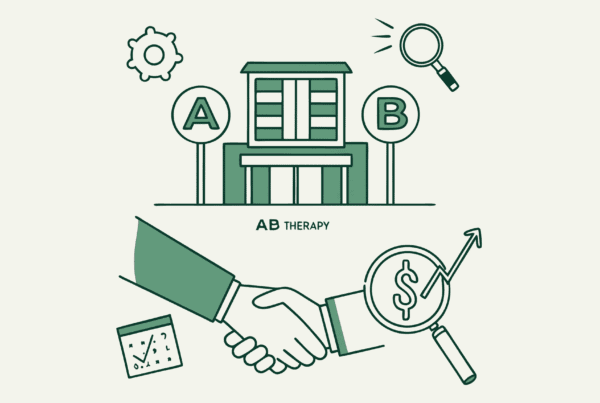Selling a cardiology practice in Utah presents a significant opportunity right now. The state’s growing population and ongoing physician shortage have created high demand for specialized medical services. For practice owners, this translates into a favorable market. However, turning market potential into a successful transition requires a clear strategy and a deep understanding of your practice’s value.
Market Overview
The Utah healthcare market has a unique combination of factors that make it an attractive environment for selling a cardiology practice. This is not just a general trend. It is supported by specific local conditions.
Strong Demand for Specialists
Utah sits near the bottom nationally for its number of physicians per capita. While much of the focus is on primary care, this shortage creates a ripple effect, increasing demand for specialists. With just 239 cardiologists in the state as of 2024, established practices are valuable assets that can fill a critical need. For a seller, this demand translates directly to a stronger negotiating position and potentially higher valuations.
An Expanding Patient Base
Utah’s population continues to grow, which means more patients will need cardiovascular care for years to come. Buyers are not just acquiring your current patient list. They are investing in a future stream of revenue in a growing community. This long-term growth potential is a key selling point that sophisticated buyers look for.
Key Considerations
Thinking about selling involves more than just finding a buyer. A successful and smooth transaction depends on careful preparation. Here are three areas we see owners focus on to protect their legacy and maximize their outcome.
-
Get a Professional Valuation. Your practice is likely worth more than just its physical assets or annual revenue. A professional valuation will analyze your adjusted earnings, payer mix, and referral sources to determine its true market value. Buyers will expect this, and it becomes the foundation of your entire negotiation strategy.
-
Define Your Transition Plan. Buyers want to know your reason for selling and what your role will be after the sale. Are you willing to stay on for 6 to 24 months to ensure a smooth handover? A clear, documented transition plan gives buyers confidence and protects patient retention, adding significant value to the deal.
-
Create a Staff Retention Strategy. Your experienced staff is one of your practice’s most valuable assets. A plan for how your team will be managed and retained after the sale is critical. Addressing this early on reassures both your team and potential buyers that the practice’s operational stability will continue.
Market Activity
The decision to sell your practice is happening in a dynamic marketplace. It is not occurring in a vacuum. Two major trends are shaping opportunities for cardiology practice owners in Utah and across the country.
A National Trend Hits Home
You are not alone in considering a sale. Nationally, nearly one in seven cardiologists are looking to sell their practices. This means there is a well-established market with proven transaction models. It is no longer an uncommon path. Instead, it has become a common strategic choice for physicians planning for retirement or their next career chapter.
The Rise of New Buyers
The buyer landscape has changed. It is no longer limited to local hospitals or other physicians. Private equity firms and other large healthcare platforms are now active investors in specialty practices like cardiology. These buyers bring significant capital and operational expertise. They also bring a new level of sophistication to the transaction process, making professional preparation more important than ever.
Sale Process
Selling a practice follows a structured path. Understanding these stages helps you prepare for what is ahead and avoid common roadblocks. While every sale is unique, we generally see the process unfold in a few key phases.
| Sale Stage | Common Challenge |
|---|---|
| Preparation & Valuation | Underestimating the practice’s true value by using simple formulas instead of a deep financial analysis. |
| Marketing | Breaching confidentiality by talking to the wrong people or not having buyers sign non-disclosure agreements. |
| Negotiation | Focusing only on the final price while overlooking critical deal structure terms that affect taxes and future obligations. |
| Due Diligence | The deal falling apart due to disorganized financial records or unexpected compliance issues discovered by the buyer. |
| Closing | Delays or disputes over final legal documents, lease transfers, or working capital calculations. |
Valuation
Many physicians believe their practice’s value is simply a multiple of its yearly revenue. The reality is more nuanced, which is good news for profitable specialty practices. Sophisticated buyers look deeper, and so should you.
-
Look Beyond Revenue. While revenue is important, buyers are most interested in profitability. A practice with $2 million in revenue and high profit margins is often more valuable than a practice with $3 million in revenue and low margins. For cardiology practices, valuation multiples based on profit can range from 3x to over 7x.
-
Understand Adjusted EBITDA. The single most important metric is Adjusted EBITDA (Earnings Before Interest, Taxes, Depreciation, and Amortization). We start with your net income and add back things like your personal salary above market rate, car leases, or other one-time expenses. This number shows a buyer the true cash flow of the business, and it is almost always higher than your reported profit.
-
Your Specialty is a Premium. General medical practices might sell for a lower multiple of their earnings. However, specialty practices like cardiology are in higher demand. Your unique skills, established referral patterns, and specialized equipment all contribute to a higher valuation multiple.
Post-Sale Considerations
The work is not over once the sale documents are signed. Planning for the post-sale period is just as important as planning for the sale itself. It ensures a successful transition for you, your staff, and your patients.
Your Role After Closing
Your continued involvement, often for a period of 6 to 24 months, is a key part of most practice sales. This is a negotiated term, not a given. Defining your role, compensation, and schedule during this transition period is critical to ensuring your expectations align with the new owner’s.
Ensuring a Smooth Handover
A smooth transition of leadership is key to maintaining the practice’s momentum. This involves more than just clinical handoffs. It means introducing the new owner to key referral sources, helping transfer operational knowledge, and providing stability for the staff and patient base during a period of change.
Maximizing Your Net Proceeds
The final sale price is not the same as the amount of money you take home. The way the deal is structured has major implications for your after-tax proceeds. Decisions about asset sales versus entity sales, or how things like earnouts are structured, can dramatically change your final financial outcome. Thinking about this from the very beginning is key.
Frequently Asked Questions
Why is now a good time to sell a cardiology practice in Utah?
Utah’s growing population and ongoing shortage of physicians, especially specialists like cardiologists, create high demand for cardiology practices. This results in a favorable market for sellers with strong negotiating positions and potentially higher valuations.
What factors determine the valuation of a cardiology practice in Utah?
Valuation goes beyond just annual revenue. Key factors include adjusted earnings (Adjusted EBITDA), payer mix, referral sources, profitability margins, and the specialty premium due to cardiology’s high demand. Valuation multiples can range from 3x to over 7x earnings based on these variables.
What are the important steps to prepare for selling my cardiology practice?
Important steps include obtaining a professional valuation, defining a clear transition plan including your post-sale role, and creating a strategy to retain your experienced staff. These steps maximize your practice’s value and provide confidence to buyers.
Who are the typical buyers of cardiology practices in Utah?
Buyers include local hospitals and physicians as well as an increasing number of private equity firms and large healthcare platforms. These new buyers bring capital, operational expertise, and more sophisticated transaction processes.
What should I consider for a smooth transition after selling my practice?
Key considerations include negotiating your ongoing role for 6 to 24 months, ensuring thorough handover of clinical and operational knowledge to maintain practice momentum, retaining staff to preserve operational stability, and structuring the sale to optimize your net financial proceeds after taxes.



